Great coaches know how to connect with their athletes beyond “X’s and O’s”.
We all know brilliant coaches who understand programming and tactics, but when it comes to igniting a fire within their athletes, they can’t seem to make it happen. We also know coaches with an “adequate” level of knowledge and experience that have athletes who will run through a brick wall for them. 
Research on the world’s most successful coaches and leaders points to the fact that tactical knowledge and experience are only a small part of what makes them successful. Effective coaches must also have the skills required to gain trust, commitment, and buy-in from their athletes.
For years, these skills were considered the “intangibles” of effective leadership that only a few gifted coaches possessed. A rapidly expanding field of research in leadership and performance has now identified these specific skill sets that allow great leaders to create an optimal relationship with those they lead. Together, these skillsets create the critical leadership attribute called emotional intelligence, or EQ.
Coaches with a high level of EQ are able and willing to adjust their communication style to the needs of their athletes. They are aware of their own attitudes and behaviors and how these impact the training environment. Emotionally intelligent coaches reflect on how they can continually improve their ability to communicate and inspire the best performance in their athletes.
Imagine refining your leadership skills to develop an even more effective relationship and communication style with your athletes. Consider how the ability to quickly develop trust, buy-in, and enthusiasm can help you further unlock their potential.
The good news is that emotional intelligence can be developed. Just like a movement skill, it can be broken down into individual components that can improve with training.
The 5 skillsets that comprise emotional intelligence are:
- Self-awareness
- Self-regulation
- Motivation
- Empathy
- Social Skill
Let’s look at how you can add EQ to your coaching IQ by developing the individual skill sets of emotional intelligence.
Self-awareness
Self-awareness is the ability to identify your strengths, weaknesses, values, and impact on others honestly and accurately. This awareness can be general or situational.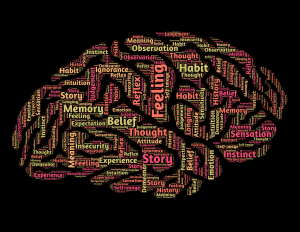
Developing the skill of self-awareness can be challenging, as it requires you to be vulnerable enough to move past ego and insecurity. When something isn’t working in the coach/athlete relationship, it requires you to honestly reflect on your role in this shortcoming.
To develop this skill set, self-reflection is critical. However, it’s also important to gain feedback from colleagues and mentors while resisting the urge to become defensive. Record yourself coaching and evaluate what you do well from a communication standpoint, and what you can do better.
Identifying a personal weakness doesn’t suggest failure any more than identifying a strength suggests complete mastery. The goal of continual personal assessment isn’t to label, justify, or judge your behavior. It’s merely information. When you are aware of this information, you have the ability to develop and access more effective coaching tools that match the needs of your athletes.
Self-regulation
Self-regulation is the ability to consciously control your actions, reactions, and moods.
Gaining control over emotional response can be difficult. Consider, however, how your mood and/or emotional reactions impact your training environment. If you show up to a training session in a bad mood, already agitated, how do you expect your interactions with athletes to go? When this happens frequently, what does this do for your ability to gain trust and buy-in from your athletes?
To develop the skill of self-regulation, consider the situations that bring out your most ineffective emotional responses. In what specific ways do these emotional responses impact the training environment? Is this the training culture you aim to create? Now, identify and write down more effective ways to deal with these situations. As you are coaching, look for opportunities to exercise these more effective emotional responses.
Motivation
Motivation is a measure of your drive to succeed.
It could be assumed that all coaches are motivated to create success with their athletes. However, notoriety, promotion, financial gain, and other self-serving aspects of motivation can come into play. While pursuing success for your athletes can result in all the above, the most effective coaches are motivated by achievement for the sake of achievement.
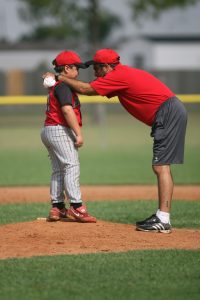 What motivates you as a coach? Consider the aspects of coaching that have made you voluntarily go above and beyond. What gets you excited? What pulls you to give everything you have to your athletes?
What motivates you as a coach? Consider the aspects of coaching that have made you voluntarily go above and beyond. What gets you excited? What pulls you to give everything you have to your athletes?
Do you get just as excited when a young athlete improves at a skill as when a high-profile professional athlete does? Why or why not? There’s no wrong or “bad” answer when you reflect on your personal sources of motivation. Just be aware that when athletes trust that your core motivations are in line with theirs, you have the greatest opportunity at positive impact.
Empathy
Empathy is your ability to understand and acknowledge others’ emotions and how these emotions impact their performance.
An empathetic coach tries to put themselves in their athletes’ shoes and considers their emotional makeup. A struggling athlete may be having problems at home or in the classroom, impacting their on-field performance. Acknowledging these struggles and offering words of encouragement while still holding high standards for this athlete is more effective than continually rebuking their performance.
The age, ability level, and background of our athletes can impact their emotional make-up on a daily basis. Consider the person you were when you were in middle or high school. How about college? What were the different challenges you dealt with? How would you want a coach to help you manage these challenges while helping you improve your athletic ability?
Empathy is not merely justifying and/or accepting any and all athlete behavior. It’s merely acknowledging that your athletes come from diverse backgrounds and experiences that impact their emotional makeup. Developing awareness and effective strategies to manage various emotional states shows you care about the athlete as a person.
Social Skill
Social Skill is the ability to develop rapport with others. As a coach, it’s critical for your athletes to know you have their best interests in mind. This goes beyond the tactics of training.
A coach with great social skill can quickly relate to and gain athletes’ trust by connecting on a “human” level. This can be as easy as asking an athlete how they are feeling, or what they did over the weekend. It could be demonstrated by actively listening and asking questions when an athlete shares something about their life. Either way, this demonstrates that the coach/athlete relationship isn’t merely transactional.
When you demonstrate a genuine interest in your athletes as people, they learn to trust that you have their best interests in mind.
Great coaches are always looking for opportunities to become more effective in leading their athletes to excellence. Consider the skill set of emotional intelligence and your own improvement with these skills could significantly impact young lives.
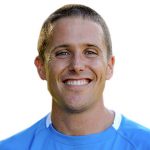 Brett Klika is a youth performance expert and a regular contributor to the IYCA who is passionate about coaching young athletes. He is the creator of the SPIDERfit Kids youth training program and has run successful youth fitness programs all over the country. Brett is an international speaker whose passion for youth fitness has helped thousands of people learn how to create exceptional training experiences for young athletes.
Brett Klika is a youth performance expert and a regular contributor to the IYCA who is passionate about coaching young athletes. He is the creator of the SPIDERfit Kids youth training program and has run successful youth fitness programs all over the country. Brett is an international speaker whose passion for youth fitness has helped thousands of people learn how to create exceptional training experiences for young athletes.
Thank you for reading this article our gift to you is a FREE Training Video on Developing Athletes from Start to Finish, from IYCA CEO, Jim Kielbaso: Get your FREE TRAINING TODAY!
Are you ready to really take your knowledge to the next level?
The IYCA Certified Athletic Development Specialist is the gold-standard certification for anyone working with athletes 6-18 years old. The course materials were created by some of the most experienced and knowledgeable professionals in the industry, and the content is indisputably the most comprehensive of any certification related to athletic development. Learn more about the CADS certification here:
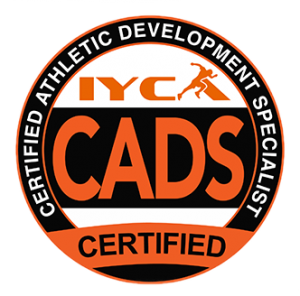
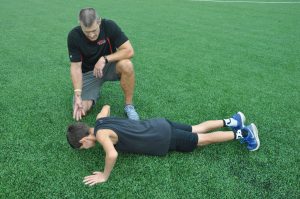
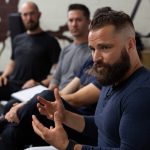 Brett Bartholomew is a strength and conditioning coach, author, consultant, and Founder of Art of Coaching™. His experience includes working with athletes both in the team environment and private sector along with members of the United States Special Forces and members of Fortune 500 companies.
Brett Bartholomew is a strength and conditioning coach, author, consultant, and Founder of Art of Coaching™. His experience includes working with athletes both in the team environment and private sector along with members of the United States Special Forces and members of Fortune 500 companies.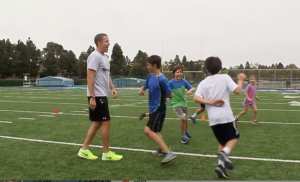
 One of the fastest and easiest ways to create a community where young athletes feel like they belong is for coaches and other athletes to
One of the fastest and easiest ways to create a community where young athletes feel like they belong is for coaches and other athletes to  This level of consistent feedback brings parents into the process. It leaves no question as to where their investment of time, money, and energy in your program is going. They are less likely to discontinue participation when they understand where their child is in the developmental process. It doesn’t hurt that they get to know you better either.
This level of consistent feedback brings parents into the process. It leaves no question as to where their investment of time, money, and energy in your program is going. They are less likely to discontinue participation when they understand where their child is in the developmental process. It doesn’t hurt that they get to know you better either. 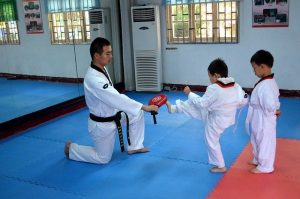

 3. Calisthenics: The simple stuff like we did back in P. E. Remember jumping jacks? How about the lost art of jumping rope? Calisthenics are a fantastic tool for warming up and coordination activities. Simple? Yes… but much more effective than jogging around a soccer field if the goal is to improve athleticism.
3. Calisthenics: The simple stuff like we did back in P. E. Remember jumping jacks? How about the lost art of jumping rope? Calisthenics are a fantastic tool for warming up and coordination activities. Simple? Yes… but much more effective than jogging around a soccer field if the goal is to improve athleticism.
 Jeremy Frisch is the owner and director of
Jeremy Frisch is the owner and director of 
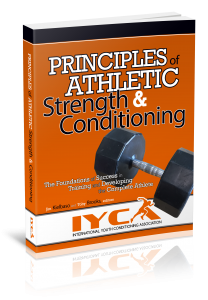

 way we consume information about strength and conditioning, and it’s probably not the best way for us to make decisions.
way we consume information about strength and conditioning, and it’s probably not the best way for us to make decisions. We see something on Instagram from someone with a bunch of followers, and we instantly think it must be the truth instead of digging deeper, doing our own research and getting the whole story. So, whether it’s politics or strength & conditioning, it’s important to get the whole story before you make a decision.
We see something on Instagram from someone with a bunch of followers, and we instantly think it must be the truth instead of digging deeper, doing our own research and getting the whole story. So, whether it’s politics or strength & conditioning, it’s important to get the whole story before you make a decision. sources of information. Of course, I use social media, but I also go to scientific journals, I take courses, I have multiple degrees, I read lots of books, I attend conferences, and I go to people who have many years of experience in the industry who put out quality information and who are in the trenches daily. These people have been doing it for years, documenting the results, analyzing their experiences and their programs, and then making decisions based on those analytics.
sources of information. Of course, I use social media, but I also go to scientific journals, I take courses, I have multiple degrees, I read lots of books, I attend conferences, and I go to people who have many years of experience in the industry who put out quality information and who are in the trenches daily. These people have been doing it for years, documenting the results, analyzing their experiences and their programs, and then making decisions based on those analytics. Along with the effectiveness of a training stimulus, you have to weigh the risk vs. benefit to help determine whether it’s the right choice to include in a program. For example, when I see kids standing on stability balls or doing circus tricks, I feel like the training benefit is incredibly small while the risk is fairly high. Or, I’ll see kids stacking a bunch of plates up on top of boxes to see how high they can jump. Again, the training benefit of jumping onto a box is no greater than jumping in the air as high as you can and landing on the ground, but the risk is MUCH greater. So, I personally don’t feel like the risk outweighs the benefit.
Along with the effectiveness of a training stimulus, you have to weigh the risk vs. benefit to help determine whether it’s the right choice to include in a program. For example, when I see kids standing on stability balls or doing circus tricks, I feel like the training benefit is incredibly small while the risk is fairly high. Or, I’ll see kids stacking a bunch of plates up on top of boxes to see how high they can jump. Again, the training benefit of jumping onto a box is no greater than jumping in the air as high as you can and landing on the ground, but the risk is MUCH greater. So, I personally don’t feel like the risk outweighs the benefit. Jim Kielbaso is the President of the IYCA and owner of
Jim Kielbaso is the President of the IYCA and owner of 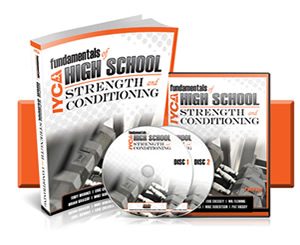
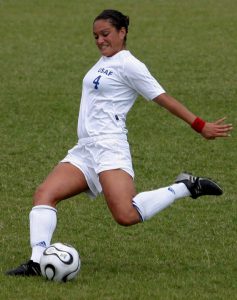
 Tears rushed down my cheeks and fell to the grass like the collective sweat that rushed down our necks. I wanted to be inside the lines again. I yearned to still be a part of our sacrifice. To be living the collective commitment we made to one another. To be on the field playing the game that we loved. In those final moments, I was flooded with a sense of loss.
Tears rushed down my cheeks and fell to the grass like the collective sweat that rushed down our necks. I wanted to be inside the lines again. I yearned to still be a part of our sacrifice. To be living the collective commitment we made to one another. To be on the field playing the game that we loved. In those final moments, I was flooded with a sense of loss. 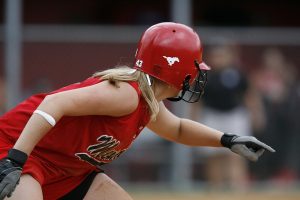

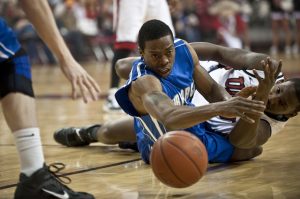 I found so much meaning in, I drew so much of my self-worth from sports. And while I found so much of myself
I found so much meaning in, I drew so much of my self-worth from sports. And while I found so much of myself  Jill Kochanek is a doctoral student at the Institute for the Study of Youth Sport at Michigan State University. She is also a high school soccer coach. As a coach-scholar, Jill is passionate about bridging the research-practice gap to make sport a more inclusive, empowering context. Her research and applied work centers on helping athletes (and coaches) take charge of their own developmental process and social progress. If you enjoyed this article, feel free to visit her youth sport coaching blog,
Jill Kochanek is a doctoral student at the Institute for the Study of Youth Sport at Michigan State University. She is also a high school soccer coach. As a coach-scholar, Jill is passionate about bridging the research-practice gap to make sport a more inclusive, empowering context. Her research and applied work centers on helping athletes (and coaches) take charge of their own developmental process and social progress. If you enjoyed this article, feel free to visit her youth sport coaching blog, 
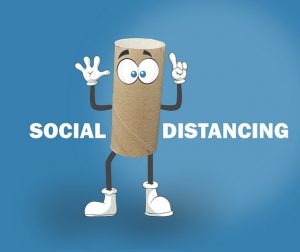 Social Distancing –
Social Distancing – 
 Bio:
Bio: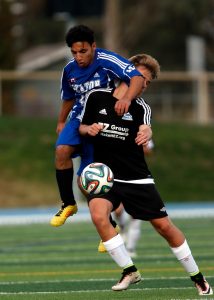
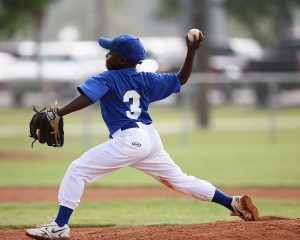 That’s why we see things like 12-year-olds getting Tommy John surgery or 13-year-old soccer players with hip dysplasia. These things are typically a result of athletes being pushed too hard, too early. They “appear” to be able to do things that they simply shouldn’t be doing yet, like throwing 80 MPH at 12 years old.
That’s why we see things like 12-year-olds getting Tommy John surgery or 13-year-old soccer players with hip dysplasia. These things are typically a result of athletes being pushed too hard, too early. They “appear” to be able to do things that they simply shouldn’t be doing yet, like throwing 80 MPH at 12 years old. 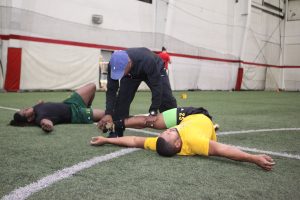


 As hard as it is to watch your child fail, teach them how to turn setbacks into comebacks. Michael Jordan often talks about how impactful it was for him to get cut from his high school basketball team. That year, he probably grew more than any other year of his life because he wanted to prove his coaches wrong. That setback helped him develop a mindset, attitude and work ethic that propelled him on to become one of the greatest basketball players of all time. Had he made that team, it’s possible that he would have never developed that spirit, and we might not even be talking about him.
As hard as it is to watch your child fail, teach them how to turn setbacks into comebacks. Michael Jordan often talks about how impactful it was for him to get cut from his high school basketball team. That year, he probably grew more than any other year of his life because he wanted to prove his coaches wrong. That setback helped him develop a mindset, attitude and work ethic that propelled him on to become one of the greatest basketball players of all time. Had he made that team, it’s possible that he would have never developed that spirit, and we might not even be talking about him.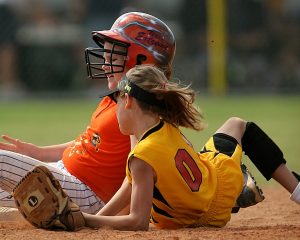 Kids who achieve early successes without having to work hard will often get passed up later in life as others learn how to work hard and overcome setbacks. Early achievers need larger challenges than others at a young age to keep them constantly improving rather than being satisfied with simply being better than kids on their team.
Kids who achieve early successes without having to work hard will often get passed up later in life as others learn how to work hard and overcome setbacks. Early achievers need larger challenges than others at a young age to keep them constantly improving rather than being satisfied with simply being better than kids on their team. 
 A highly athletic, low-skilled soccer player can easily get into position to make a play, but may not be able to take full advantage of the opportunity because of the low technical skills. On the other hand, a highly-skilled, low-athleticism player can control the ball, but won’t be able to get into position where their skills can best be utilized.
A highly athletic, low-skilled soccer player can easily get into position to make a play, but may not be able to take full advantage of the opportunity because of the low technical skills. On the other hand, a highly-skilled, low-athleticism player can control the ball, but won’t be able to get into position where their skills can best be utilized.